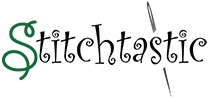Whether you are new to cross stitch or an avid stitcher, can you find the right coloured thread or floss quickly when you need it or are your sewing items rather mixed up? Do you hoard materials which you have purchased whilst out shopping because they might come in handy for something?
Some extremely lucky people have a dedicated sewing room in their house but most of us probably pop a bag containing the current piece being worked on at the side of our armchair or sofa when we are not using them. If your craft bag is very untidy containing several different pieces of work it is probably rather difficult to find a specific piece or colour of thread so here are some tips on how to organise your sewing things.
When working on several cross stitch pieces at the same time, keep each piece, together with the relevant charts and thread, separate from the others, that is one piece of work per bag. If you write on a label the title of the piece in that particular bag and stick it to the outside of the bag, not only will this make it easier to find particular pieces but it will also help to keep the pieces not in current use much cleaner.
Each time you commence a fresh piece of work, it is advisable to make yourself a thread card for that particular item. Look at the number of different colours required and write a list of the colours and their numbers on a clean plastic card beginning with the colour to be used first and so on. Leave about half an inch between each item on your list. Using a hole punch, make a hole against each item and then cutting your thread in 18" lengths, double it and push it through the relevant hole on the card, pulling one end of the thread fairly tightly to secure it to the card. You now have a nice tidy assortment of different pieces of work with the appropriate thread for each article clearly marked.
Experienced cross stitchers do not always work from ready made kits but will quite often design their own patterns and charts. If you regularly buy Aida or other types of material, do fold it neatly, wrap and label it clearly so you know exactly which piece is which. It is also a good idea to date your label and when having a periodic tidy up if you come across material over two years old throw it out as if you haven't used it by now you probably never will. If you are not happy at throwing things away you could donate them to your local school or day centre for the elderly. Several establishments of this nature encourage their members to cross stitch as it is a form of relaxation and a method of relieving stress.
If you have huge amounts of material waiting to be used, you may need to purchase special plastic boxes to store it all in provided, of course, you have the space to keep these. Each container should be clearly labelled with the name of the sort of material it contains as keeping things in this way will save you a lot of time when you are looking for a particular piece of cloth.
Sheets of graph paper which can be used to design your own patterns should also be kept clean and tidy. Larger sheets should be rolled and stored in an air tight tubular container and smaller pieces can be kept in plastic document wallets.
Similarly, your cottons, pins, needles, sewing thread or floss and all the other bits and bobs needed for cross stitching and sewing should be stored in a tidy fashion and not allowed to get tangled together. Keeping everything in order will save a lot of time and it is worth organising your sewing kit properly. Craft shops will be able to supply all sorts of "tidy boxes" to keep things in and, of course, small glass jars or plastic containers with screw tops, empty mint sauce jars for example, are ideal for storing pins, needles, buttons and beads once the jars have been washed. If it is not possible to see through the container, make a label illustrating what is in it and you will have no difficulty in ever finding what you are looking for. If you've ever dyed your hair and had those little pots that the gloves come in left over - keep them - they're fantastic for keeping little accessories in!
Once you have discovered how relaxing and enjoyable cross stitching can be, and you have taken the time and trouble to organise your sewing items, you will be able to find anything you are looking for without the hassle of wading through piles of material or lots of different threads and will have much more time to cross stitch.
